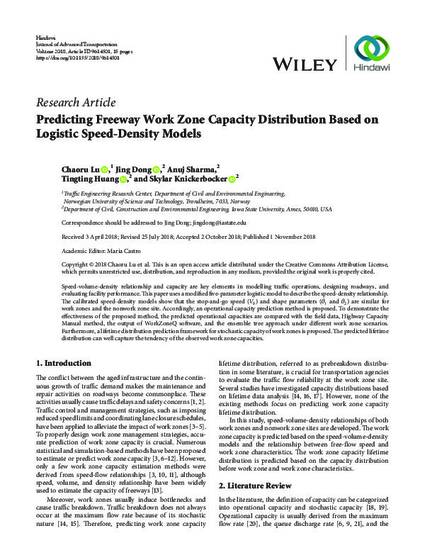
Speed-volume-density relationship and capacity are key elements in modelling traffic operations, designing roadways, and evaluating facility performance. This paper uses a modified five-parameter logistic model to describe the speed-density relationship. The calibrated speed-density models show that the stop-and-go speed (V-b ) and shape parameters (theta(1) and theta(2) ) are similar for work zones and the nonwork zone site. Accordingly, an operational capacity prediction method is proposed. To demonstrate the effectiveness of the proposed method, the predicted operational capacities are compared with the field data, Highway Capacity Manual method, the output of WorkZoneQ software, and the ensemble tree approach under different work zone scenarios. Furthermore, a lifetime distribution prediction framework for stochastic capacity of work zones is proposed. The predicted lifetime distribution can well capture the tendency of the observed work zone capacities.
Available at: http://works.bepress.com/anuj_sharma1/85/

This article is published as Lu, Chaoru, Jing Dong, Anuj Sharma, Tingting Huang, and Skylar Knickerbocker. "Predicting Freeway Work Zone Capacity Distribution Based on Logistic Speed-Density Models." Journal of Advanced Transportation 2018 (2018): 9614501. DOI: 10.1155/2018/9614501. Posted with permission.